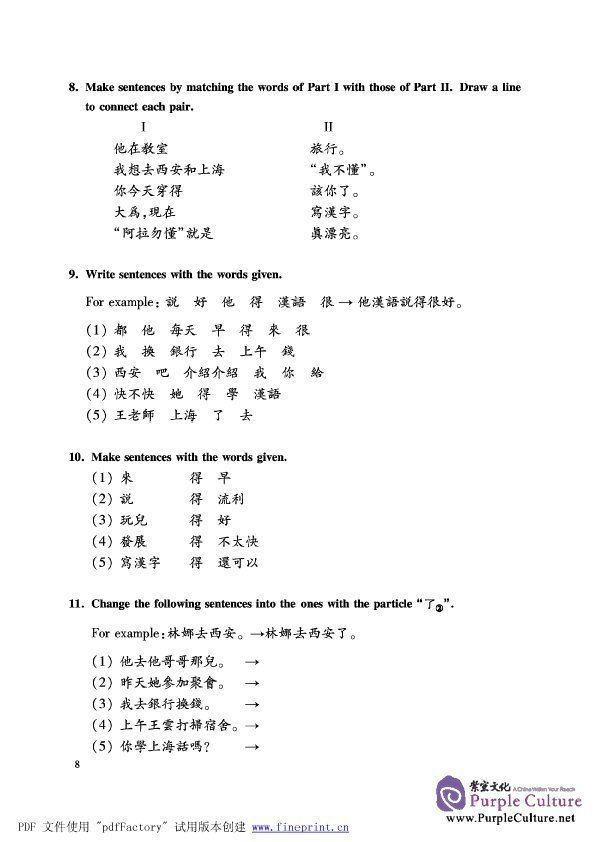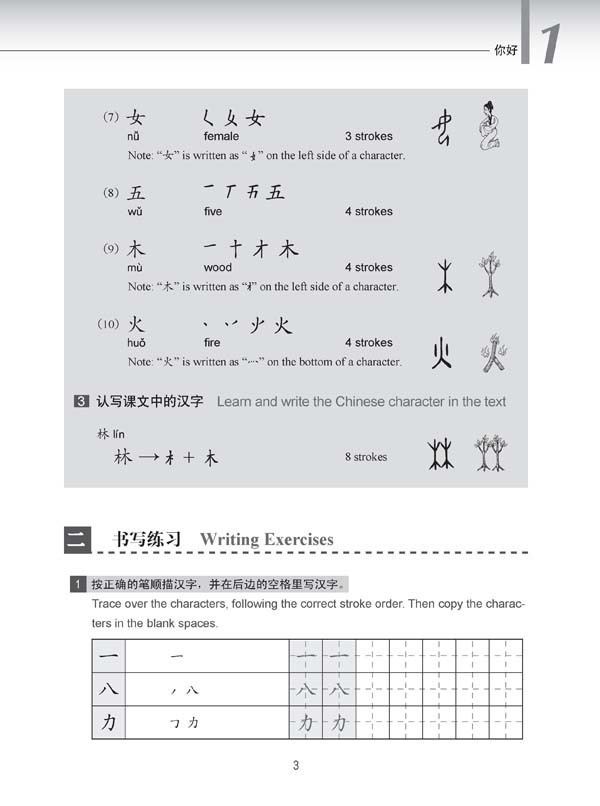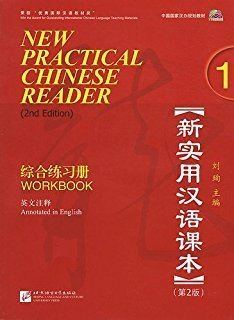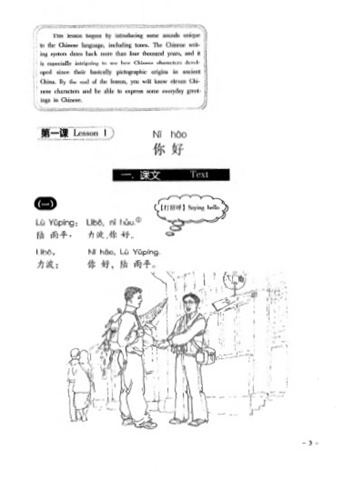Genre Language textbook | Published Beijing | |
 | ||
Original title shíyòng hànyŭ kèbĕn (实用汉语课本) Publisher Shangwu Yinshuguan (The Commercial Press) | ||
New practical chinese reader 1 lesson 1
The Practical Chinese Reader (Chinese: 实用汉语课本; pinyin: shíyòng hànyŭ kèbĕn) is a two-volume series of Chinese language teaching books developed to teach non-Chinese speakers to speak Chinese, first published in 1981. In fifty lessons, the reader studies a vocabulary of 1,000 words, and basic Chinese phonology and grammar. The lessons tell the story of two foreign students of Chinese, Palanka and Gubo, first in their own country (Book I) and then in China (Book II). They give priority to everyday topics that Gubo and Palanka encounter (e.g. clothing, entertainment, socializing), and also provide background information on Chinese culture, society, and history.
Contents
- New practical chinese reader 1 lesson 1
- New practical chinese reader 4 chapter 39
- New Practical Chinese Reader
- The characters
- References

The Practical Chinese Reader was the first set of dedicated textbooks on basic Chinese for use by foreign students of Chinese sponsored by the Chinese Ministry of Education, who commissioned three professors at Beijing Languages Institute (now Beijing Language and Culture University) to write it in the 1970s. It was praised by American and German academics in the early 1980s as practical and advanced. It also received a warm domestic welcome for its "meticulously planned" educational content and innovation in "using the communicative principle and strengthening cultural knowledge education", and won the second prize inaugural Beijing Philosophy and Social Sciences Award for Excellence.
New practical chinese reader 4 chapter 39
New Practical Chinese Reader

Practical Chinese Reader was completely revised in 2002 and was re-published as New Practical Chinese Reader. New teaching material and concepts were added, while older words not in common use were removed. The new series consists of six volumes: the first four targeting beginners, while the last two are geared for intermediate learners. The New Practical Chinese Reader pays homage to the older edition by introducing a new character, Libo, who is the son of Gubo and Ding Yun from the original edition.
Page two of the NPCR reads:
A Canadian Student, aged 21, male Gubo is his father Ding Yun is his mother.
Versions in English (Simplified Chinese or Traditional Chinese), Spanish, German, French, and Russian are available. Versions in other languages are to be published soon.
The characters

In order to keep the dialogue the same, the characters are given universal names in translations of the book across all languages.
